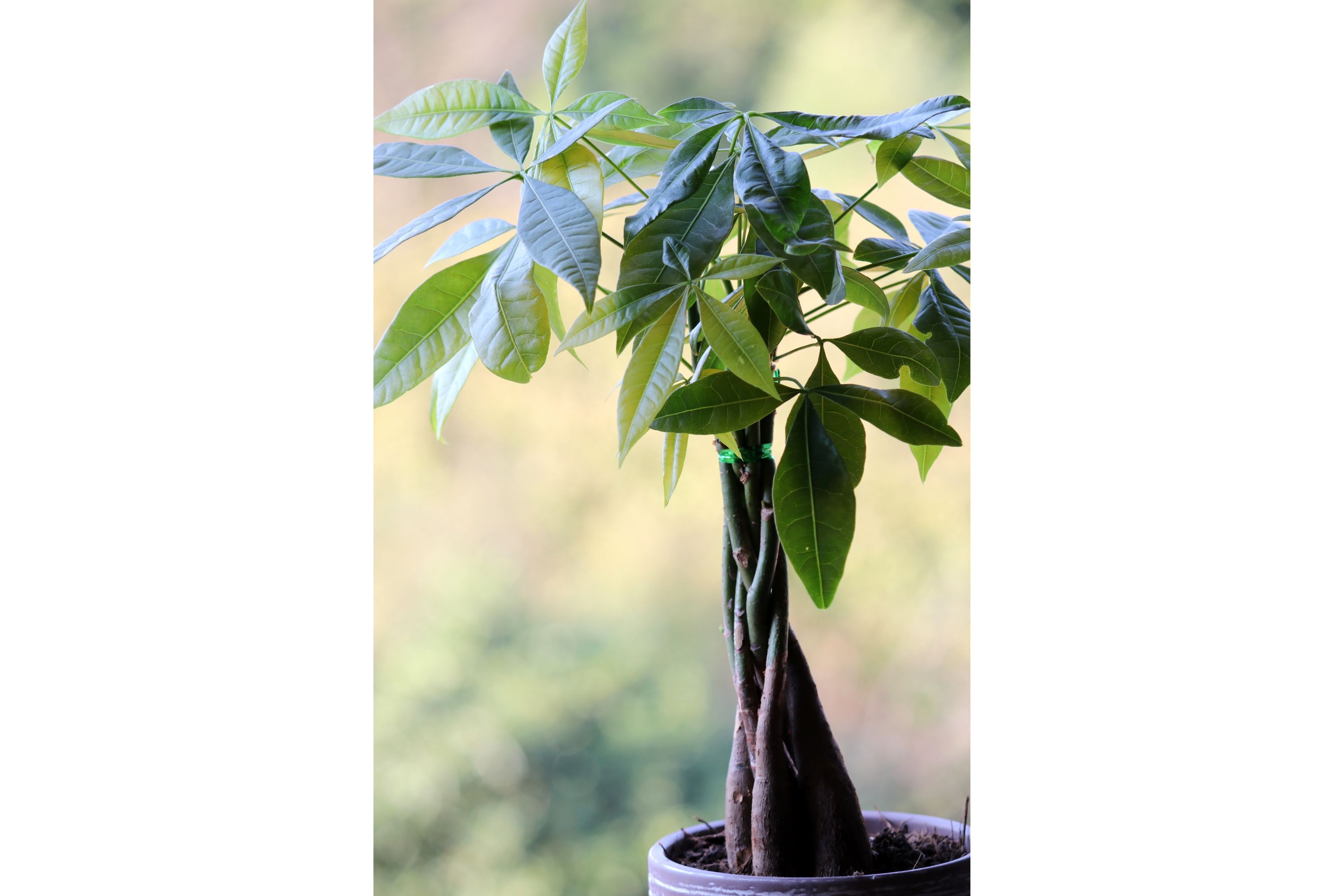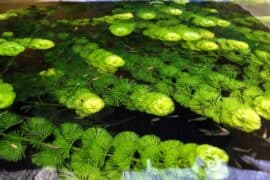Money tree
(Pachira aquatica)

Description
Pachira aquatica, commonly known as the Money tree, is a tropical tree that is native to Central and South America. It belongs to the family Malvaceae, which includes over 200 genera and 2,300 species of plants. The Money tree has become popular as an indoor plant due to its ornamental value and its reputation for bringing good luck and wealth to its owner. In this article, we will explore the different aspects of the Pachira aquatica, including its botanical features, its habitat, and its care requirements. Botanical Features The Money tree is a multi-stemmed tree that can grow up to 20 meters tall in its native habitat, but usually, it is smaller in indoor settings. Its leaves are palmately compound, meaning that several leaflets are attached to a single stem. Each leaflet is oval-shaped, with a pointed tip and a smooth edge. The leaves are bright green and glossy, and they can grow up to 20 centimeters long and 10 centimeters wide. The Money tree produces large, showy flowers that are shaped like a funnel. The flowers are a creamy white color with yellow centers, and they can grow up to 8 centimeters in diameter. The flowers are followed by fruit that is similar in appearance to a chestnut. The fruit is a woody, green capsule that contains up to 20 seeds. Habitat The Money tree is native to the swamps and riverbanks of Central and South America, where it grows in wet, humid conditions. It is commonly found in areas with high rainfall and fertile soil. In its native habitat, the Money tree is an important source of food for the local wildlife, including monkeys, parrots, and bats. The Money tree has been introduced to other parts of the world, including Asia, where it has become a popular indoor plant. It is grown in containers and used as an ornamental plant in homes, offices, and public spaces. The Money tree can adapt to a wide range of environmental conditions, making it a hardy plant that is easy to care for. Cultivation Pachira aquatica is a relatively easy plant to cultivate, and can be grown both indoors and outdoors in suitable climates. Here are some tips on the cultivation of Pachira aquatica: Light: The Money tree prefers bright, indirect light. It can tolerate some direct sunlight in the morning or evening, but too much direct sun can scorch the leaves. Watering: Pachira aquatica prefers moist soil, but it should not be waterlogged. Overwatering can cause root rot, while underwatering can cause the leaves to turn yellow and drop off. Water the plant when the top inch of soil feels dry to the touch, and ensure that the pot has good drainage. Soil: The Money tree prefers a well-draining potting mix. A mix of peat moss, perlite, and sand can provide good drainage. Temperature: Pachira aquatica prefers temperatures between 60 and 75 degrees Fahrenheit. It should be protected from cold drafts and sudden temperature changes. Fertilizer: The Money tree can benefit from regular fertilization during the growing season. Use a balanced, water-soluble fertilizer and follow the instructions on the package. Pruning: Prune Pachira aquatica in the spring or summer to control its size and shape. The plant can be pruned back to encourage branching and a fuller growth habit. Repotting: Repot Pachira aquatica every two to three years to refresh the soil and provide more space for the plant's roots to grow. Use a slightly larger pot with good drainage. With proper care, The Money tree can be a long-lived and attractive addition to any indoor or outdoor garden. Propagation Pachira aquatica can be propagated by seed or stem cuttings. Here are some tips on propagating Pachira aquatica: Seed Propagation: To propagate Pachira aquatica by seed, first soak the seeds in water for 24-48 hours to soften the seed coat. Plant the seeds in a well-draining potting mix, and cover lightly with soil. Keep the soil consistently moist and warm, and provide bright, indirect light. Seeds can take 2-3 months to germinate, and may require patience and consistent care. Stem Cutting Propagation: Propagating Pachira aquatica by stem cuttings is a faster method of propagation. Take a stem cutting from a healthy, mature plant in the spring or summer. The cutting should be about 6 inches long and have at least two nodes. Remove the lower leaves from the cutting, leaving only the top two or three leaves. Dip the cut end of the stem in rooting hormone, and plant it in a well-draining potting mix. Keep the soil consistently moist, and provide bright, indirect light. After a few weeks, the cutting should begin to form roots and can be transplanted into a slightly larger pot. Propagation of the Money Tree can be a rewarding process that allows you to create new plants and expand your collection. Uses Pachira aquatica has several uses, both ornamental and practical: Ornamental: Pachira aquatica is a popular houseplant due to its attractive foliage and braided trunk. It is commonly used as a decorative plant in homes, offices, and public spaces. Bonsai: The small size and slow-growing nature of Pachira aquatica make it a popular choice for bonsai enthusiasts. The plant's braided trunk and interesting foliage make it a unique and attractive bonsai specimen. Edible Seeds: The large, woody fruit produced by Pachira aquatica contains edible seeds that are commonly used in traditional dishes in Central and South America. Traditional Medicine: In traditional medicine, various parts of the Pachira aquatica plant have been used to treat ailments such as headaches, fever, and rheumatism. Timber: The wood of Pachira aquatica is lightweight and easy to work with, and is used for various purposes such as construction, furniture, and musical instruments. Overall, Pachira aquatica is a versatile plant that has both ornamental and practical uses. Conservation Status According to the International Union for Conservation of Nature (IUCN) Red List, the conservation status of Pachira aquatica is "Least Concern". This means that the species is not currently at risk of extinction and is considered to have a stable population. However, as with many plant species, Pachira aquatica's natural habitat is under threat from deforestation, habitat loss, and climate change. Conservation efforts, such as habitat restoration and protection, are important to ensure the long-term survival of the species in the wild. Conclusion Pachira aquatica, the Money tree, is a versatile and attractive plant that is well-suited for indoor gardening. With proper care, this plant can provide years of enjoyment and make a beautiful addition to any home or office.
Taxonomic tree:







